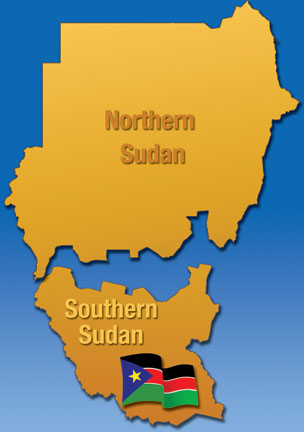www.alrakoba.net اقراء ماذا كتب ادريس الكنبورى عن حسن عبدالله الترابى.
حسن الترابي والانتهازية السياسية
حسن الترابي والانتهازية السياسية
03-10-2016 07:34 PM
عندما يفشل 'المفكر' في تسويق 'فكره': نظام الإنقاذ ليس فاسدا، الشعب السوداني هو الفاسد!
عندما يفشل 'المفكر' في تسويق 'فكره': نظام الإنقاذ ليس فاسدا، الشعب السوداني هو الفاسد!
بقلم : إدريس الكنبوري
شغل الدكتور حسن الترابي في حياته الناس كثيرا، وخاصة أبناء الحركات الإسلامية وقياداتها في العالم العربي الإسلامي طيلة أربعة عقود تقريبا. فالرجل أسهم بشكل وافر في التنظير للعمل الحركي الإسلامي، ولعب دورا كبيرا في توسيع الهامش السياسي فيه، وتزعم مبادرات سواء على المستوى السوداني أو العربي، كتلك التي حاول خلالها جمع فرقاء الحركات الإسلامية في التسعينات في المؤتمر الشعبي العربي الإسلامي في بداية التسعينات من القرن الماضي، من أجل البحث لنفسه عن زعامة عربية، كما أنه قدم اجتهادات في الفقه الإسلامي أثارت عليه الكثير من السخط والاستنكار من لدن أكثر من طرف، سواء لجهة ما اعتبره البعض شذوذا، أو لجهة ما رأى فيه آخرون مناورة سياسية عبر بوابة الفقه.
وبالرغم من الموقع الذي يحتله في خارطة الحركات الإسلامية، تنظيرا وممارسة، إلا أن شخصية الترابي تختزل مجمل المفارقات والأزمات التي نخرت جسم الحركات الإسلامية في العالم العربي، وتكاد تكون المرآة العاكسة لهذا الجسم كله. فسواء على صعيد التنظير، أو على صعيد الممارسة، شكل الترابي نموذج الإسلامي كثير التحول، الذي لا يرسو على جانب، ويشترك فيه أشخاص متشاكسون.
تلخص مسيرة الترابي ظاهرة الانتهازية السياسية في أبرز وجوهها، بما يعنيه ذلك من التضحية بالمبادئ على مذبح المصالح والمكاسب. ففي نهاية السبعينات لم يتردد في التقرب من الفريق جعفر نميري، الذي وصل إلى الحكم عقب انقلاب عسكري عام 1969. تلاقت مصلحة نميري مع مصلحة الترابي في تلك الفترة عندما شعر الأول أن اللجوء إلى شعار تطبيق الشريعة الإسلامية يمكن أن يشكل مخرجا له من الأزمات الاقتصادية الطاحنة التي كانت تهدد حكمه، وتطلع الثاني إلى التعويل على النظام للوصول إلى السلطة والحصول على نوع من الكاريزما الدينية والسياسية، على إثر نجاح الثورة الإيرانية عام 1979، التي دفعته إلى الاقتناع بأن الانقلاب ليس عيبا.
وتمثل تلك المرحلة الصورة النمطية التي تشكلت على وفقها شخصية الترابي في الفترات اللاحقة. فقد أظهر قدرة كبيرة على مسايرة السلطة السياسية وتبرير ممارساتها غير الديمقراطية، في الوقت الذي كان هو لا يفتأ ينظر للديمقراطية على الطريقة الإسلامية، مازجا إياها بشيء من الليبرالية التي تشربها خلال أعوام وجوده في فرنسا وبريطانيا. ففي عام 1983، الذي أعلن فيه نميري عن بدء تطبيق الشريعة، كان الترابي أبرز المصفقين، إلى جانب كثير من الإسلاميين خارج السودان، في طليعتهم يوسف القرضاوي. ولأن نميري كان بحاجة إلى خلق الضجة من حوله وإظهار نفسه كناصر للشريعة، أقر إعدام المفكر السوداني محمود محمد طه عام 1985 بتهمة الردة عن الإسلام؛ وقد كان الترابي على رأس من باركوا ذلك القرار، لأنه كان جزء من النظام الحاكم آنذاك ووزيرا للعدل وزعيما لجبهة الميثاق المتحالفة مع نميري. وبعد ثلاث سنوات من ذلك الحادث قال نميري إن إعدام طه راجع إلى ردته عن الإسلام، واعتبر أن ردته "أكبر من كل أنواع الردة التي عرفناها في الملل والنحل السابقة". لكنه بعد أزيد من عشر سنوات من ذلك التصريح عاد لكي يقول بأنه كان ضد إعدام محمود طه، ولكي ينظر للحرية في الإسلام ولاستقلالية العلماء عن السلطة، ويعلن موقفه الجديد، الذي قال فيه:" لا أحب أن أصم إنسان بالكفر مهما فعل".
وفي عام 1989، عندما تم الانقلاب على حكومة صهره الصادق المهدي، كان أحد أبرز المنظرين للنظام الجديد الذي تحالف معه ضد جميع خصومه السابقين. وقد أذكى هذا الموقف من الترابي شهوة السلطة لدى مختلف الجماعات الإسلامية، التي بدأت ترى في النموذج الانقلابي الوصفة السحرية لتحقيق غاياتها في القبض على الحكم. وقد أطلق الترابي لسانه في امتداح الحكم الجديد والتبشير به في الداخل والخارج، وساهم في تسويقه على نطاق واسع. وكان من أشهر تصريحاته في هذا الصدد قوله بأن نظام الإنقاذ ليس فاسدا، وأن الشعب السوداني هو الفاسد. وقد قادت سياساته الارتجالية في تلك الفترة إلى إذكاء ملف الجنوب السوداني، ما قاد إلى الانفصال في ما بعد، بسبب سعي الترابي إلى أسلمة الجنوب.
بيد أن الترابي سرعان ما لفظته السلطة من أحشائها بعد ذلك، حين ظهرت نوازعه الانفرادية، فعاد إلى لغته القديمة بالطعن في نظام الإنقاذ وإعلان الحرب عليه والتنكر للتجربة التي كان هو نفسه أحد مهندسيها والمبشرين بها.
يمكن القول إن الترابي عاش حقبة طويلة من حياته في الضفة المقابلة للأفكار التي بشر بها والتنظيرات التي قدمها، الوحدة مقابل التجزئة في السودان، سلطة الرجل الواحد مقابل الفكر التنظيمي المؤسسي الذي نظر له، الاستبداد مقابل الديمقراطية التي أنفق الكثير من الوقت في التنظير لها، التشتت التنظيمي بدل الوحدة التنظيمية التي نادى بها، شهوة السلطة مقابل الفكر الزهدي الذي بشر به، الحزبية الضيقة التي كان هو نفسه ألد أعدائها نظريا في كتاباته لكنه كرسها في ممارسته السياسية داخل التجارب التنظيمية التي أنشأها وقادها. وتعكس هذه الظاهرة حالة من الانتهازية السياسية التي ترتكز على الانقلاب في المواقف بحسب زاوية المصلحة، حتى وإن أدى ذلك إلى إحداث كوارث تحصد الأخضر واليابس. وقد سئل الترابي نفسه عن هذه الازدواجية في شخصيته والتقلب في المواقف، فكان جوابه أن مسيرته تلخص مسيرة الحياة السياسية في السودان، التي طبعتها الانقلابات السياسية والعسكرية والمناورات الحزبية. وإذا كان الترابي قد أخطأ التوازن بين التنظير والموقف في حياته العملية، فقد أصاب في هذا التصريح الشهير.
إدريس الكنبوري
كاتب وباحث أكاديمي من المغرب، من آخر إصداراته"الإسلاميون بين الدين والسلطة: مكر التاريخ وتيه السياسة"(2013) و"شيوعيون في ثوب إسلامي"(2014).
Elganbouri2001@yahoo.fr





